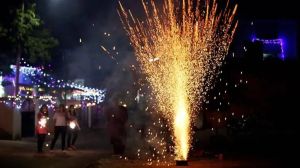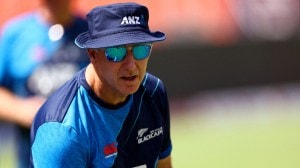Pakistan’s head-quarters
Karachi was deemed the capital of the new nation of Pakistan. This, of course, was much before Islamabad became a reality. Readers of the Indian Express were given this thumbnail sketch of the city’s history and its rapid transformation

The parched and wearisome landscape of Karachi where the desert wind howls from dawn to dusk and all the night long, is today changing.
Over empty spaces dotting this city of distances, hutments are rearing up in profusion. Ninety-two lakhs of rupees has been earmarked to provide the habitation for the offices and persons who will run the Pakistan’s Secretariat.
When the League Council, at the memorable session in Delhi, decided to have Karachi as its capital, the greatest problem it had to encounter was that of accommodation. Already crowded Karachi had received an addition of population during war-time, as life in the mofussil had become increasingly insecure. Pot-bellied Sethias, globe-trotting Bhalbunds and shrewd Shikarpuris made a beeline to this city. Also Sindhi merchants, whisked away from the storm-centres of the world, set up their tiny shops in Karachi and did roaring business…
Mr Jinnah gave the order that before the zero hour struck on August 15, all the necessary accommodation for the incoming personnel from Delhi must be found. There was a rapid survey of the city and undeveloped plots not only fringing the Secretariat but the Lawrence Road were chosen to build houses and erect hutments.
Three-thousand workers were put on the job and barracks and buildings sprang up as though by the waving of a magician’s wand…
The history of the rise and growth of Karachi reads like a page from a romance. About a hundred years back, it was a neglected, unknown fishermen’s village … The supply of drinking water was chiefly drawn from wells outside the rampart wall. The population was variously estimated between 8,000 and 14,000, while the total value of imports and exports amounted to Rs 120,000 per annum.
Peeping into the musty pages of history, we perceive that Alexander the Great invaded Sind. Karachi itself has been identified with Deval Bunder, where one Raja Dahir ruled more than 2,000 years ago.
From the eighth century, when Sind was overrun by the Arabs, this province was under Mahomedan rulers till the British conquest in 1843.
A small port called Khatak, about ten miles from Karachi and formed by Cape Monze and the Hub River served the hinterland of Baluchistan and other inland places in the north, and when this place began to silt up, wealthy Hindu merchants abandoned it for a place known as Kalachi Kot (later changed into Karachi).
The growth of Karachi from this slender beginning is almost incredible. The city now has an area of 71.42 square miles. According to the census of 1941, the population of the city is 3,59,492, but of late there has been a steady increase, and today, the city has more than seven lakh people…
Like Bombay, Karachi is a cosmopolitan city, it contains a large number of Gujaratis, Punjabis and Goans. Trade and commerce are monopolised by outsiders…



- 01
- 02
- 03
- 04
- 05




























